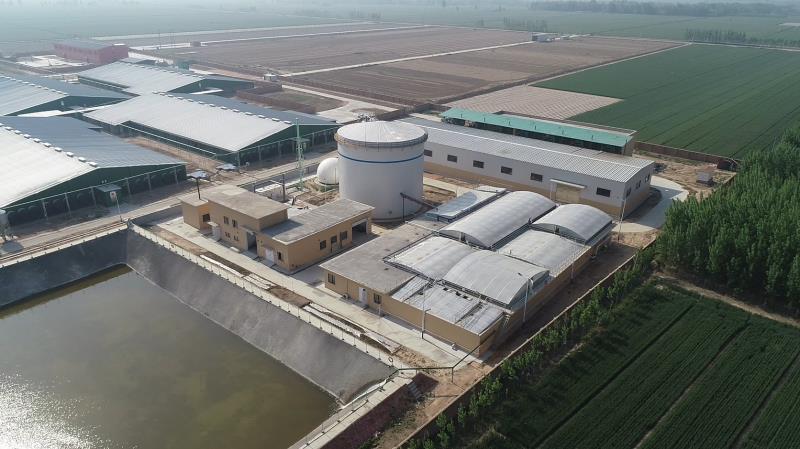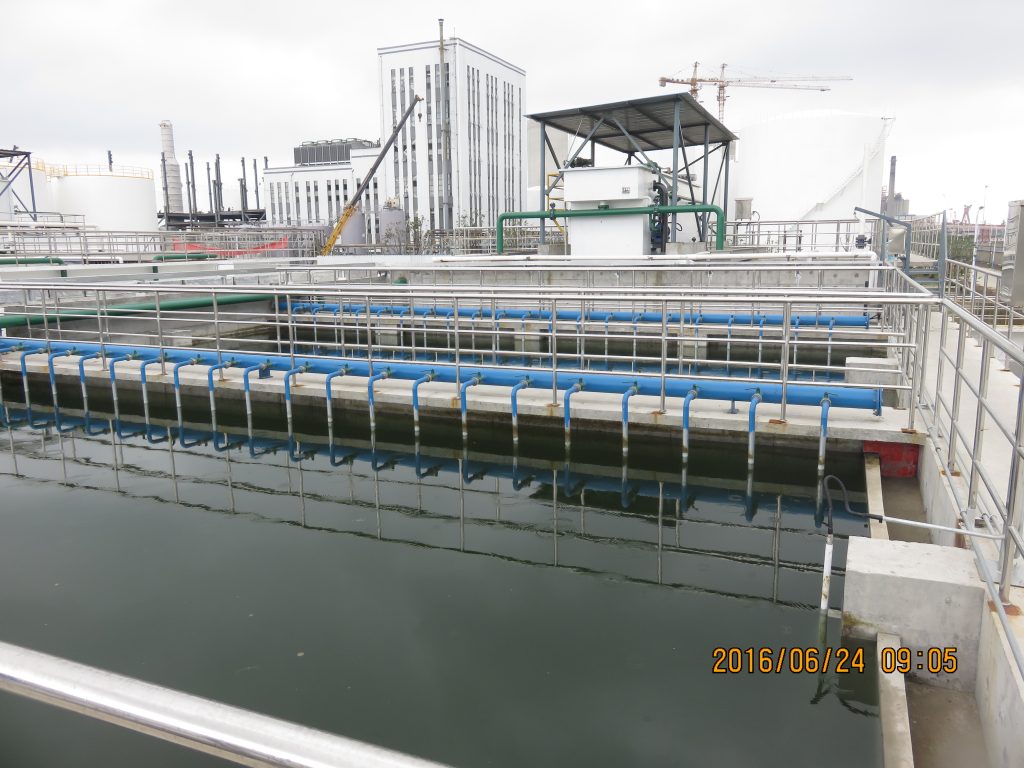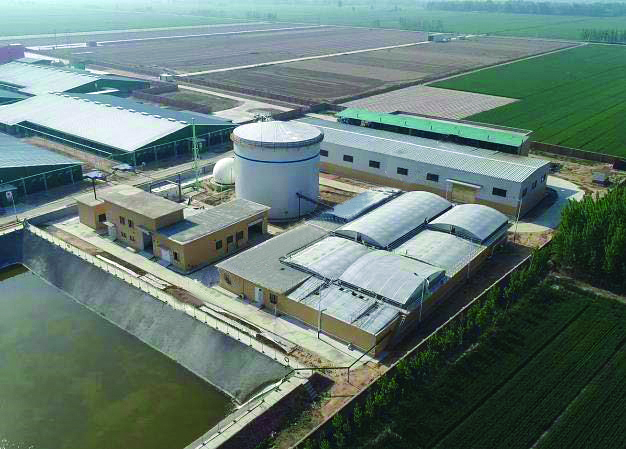The causes, effects and solutions of sludge drift in the secondary sedimentation tank!
The phenomenon of sludge flotation occurs in the secondary clarifier when activated sludge undergoes denitrification, causing the formation of sludge clusters that float to the surface or sludge particles that float and overflow with the effluent.
On the other hand, sludge bulking is caused by poor settling performance of activated sludge. When the sludge-water mixture enters the secondary clarifier, the settling velocity is too slow, resulting in a continuous increase in the sludge level in the clarifier. When there is a sudden hydraulic shock or fluctuation in water flow, a large amount of activated sludge flows out from the effluent weir.

The adverse effects of sludge bulking in the secondary clarifier include:
1.Decreased effectiveness of the biological reaction tank: Sludge bulking leads to a rapid decrease in the concentration of mixed liquor suspended solids (MLSS) in the secondary clarifier. The reduction in sludge concentration disrupts the treatment capacity of the biological reaction system, resulting in elevated effluent parameters and making it difficult to meet the inlet standards for subsequent advanced treatment processes.
2.Impaired performance of the downstream treatment processes: Following sludge bulking, the influent to the downstream treatment stages becomes a sludge-water mixture. Parameters such as COD, BOD5, NH3-N, TN, and SS exceed the limits, making it impossible for the advanced treatment processes to achieve the desired discharge standards. Moreover, the large amount of activated sludge can easily cause blockages in the downstream treatment processes, leading to more severe damage.
The phenomenon of sludge bulking in the secondary clarifier can occur due to the following reasons:
1.Improper control of sludge recycle ratio and sludge wasting:
When the sludge recycle rate is too low, the sludge accumulates at the bottom of the clarifier, causing the sludge level to rise and increasing the risk of sludge bulking.
Conversely, when the sludge recycle rate is too high, it can quickly reduce the sludge level in the clarifier. However, this also increases the inflow rate and hydraulic load, leading to excessive hydraulic shocks and sludge bulking.

2.Decreased settling performance of activated sludge:
Low influent load: Insufficient organic load in the bioreactor can lead to low organic loading on the sludge, causing sludge expansion and deteriorated settling performance.
Presence of toxic substances in the influent: Toxic substances can cause disintegration of floc, resulting in the dispersion of activated sludge and reduced settling performance.
Influent pH above 9 or below 6: In such cases, slow settling of activated sludge and turbid supernatant can be observed, and floating flocs of activated sludge may be present.
Excessive aeration in the aerobic zone: Excessive aeration can cause disintegration and auto-oxidation of activated sludge, leading to poor settling after entering the secondary clarifier.
Increased sludge concentration: To ensure the normal operation in winter, wastewater treatment plants often increase the sludge concentration. However, as the sludge concentration increases, the settling performance of the sludge rapidly decreases.
Overgrowth of filamentous bacteria: Excessive growth of filamentous bacteria can lead to loose and low-density activated sludge, resulting in poor settling performance.
Low water temperature: Low temperatures can inhibit the activity of floc-forming bacteria, leading to poor settling performance of the sludge. Additionally, microbial activity decreases at low temperatures, prolonging the time required for settling and sludge-water separation, thereby reducing the settling velocity in the secondary clarifier.
3.Improper design or mechanical failures of the secondary clarifier:
Improper design and installation during the construction phase can contribute to sludge bulking. Issues may include oversized surface load, uneven water distribution, short-circuiting, improper installation of sludge scraper, and uneven clarifier bottom affecting the scraping efficiency.
Mechanical failures prevent the proper removal of sludge from the clarifier, leading to a rise in the sludge level and ultimately causing sludge overflow through the effluent weir. Common mechanical failures include malfunctioning or shutdown of sludge scrapers, damage to scraper blades, clogging of sludge suction holes, blockages in sleeve valves, clogging of sludge discharge pipes, and failures of residual sludge pumps.
4.Sudden increase in influent flow and hydraulic shocks:
Sudden increases in wastewater flow to the treatment plant can result in higher hydraulic loads on the surface of the secondary clarifier, increased upward flow velocities, and reduced retention time for the sludge-water mixture in the clarifier. This disrupts the normal settling of activated sludge, causing sludge to be carried over without sufficient settling, leading to sludge bulking and significant overflow of activated sludge through the effluent weir.

To address the problem of sludge overturning in the secondary sedimentation tank, it is important to determine the underlying causes and implement effective solutions tailored to the specific situation. Experienced operators can devise appropriate measures based on the dominant factors contributing to sludge overturning. For example, if the temperature of the influent is identified as a major factor, transparent covers can be installed on the top of the biological reaction tank and the secondary sedimentation tank to minimize heat loss from the wastewater. Additionally, insulation measures can be applied to the outer walls of the tanks that protrude above the ground to further reduce heat dissipation.
When dealing with low influent loadings, reducing the concentration of activated sludge can help avoid excessively low BOD (biological oxygen demand) loadings on the sludge, which can adversely affect its settling performance. It is important for operators to have a clear strategy and eliminate unnecessary non-primary factors when addressing the issue of sludge overturning.
Here are some suggested approaches to manage sludge overturning in the secondary sedimentation tank:
1.Determine the appropriate strategy and conduct inspections and monitoring:
Verify if the design parameters of the secondary sedimentation tank are still suitable for the current operational requirements.
Conduct inspections when the plant is temporarily shut down to check for any damages to the bottom scraper blades of the sedimentation tank. Also, ensure that the rotational speed and peripheral velocity of the scraper machine meet the current design specifications.
Conduct microscopic examinations of the microbial species within each section of the biological reaction tank daily. This can help determine if the poor settling of activated sludge is caused by filamentous bacteria swelling.
Conduct continuous sampling and testing at the inlet of the wastewater treatment plant to determine if toxic or harmful substances are present in the wastewater.
Continuously monitor pH levels and review historical data to establish the normal pH range of the influent at the wastewater treatment plant, thereby ruling out the influence of pH values.

2.Consider replacing the existing scraper machine with a suction dredger:
During practical operations, it is often observed that sludge overturning occurs on the outer side of the secondary sedimentation tank, while the inner side experiences clear water overflow. This is due to the parabolic shape of the sludge-water interface in the cross-section of the sedimentation tank, with a noticeably higher sludge level on the outer edge during sludge overturning.
Therefore, if conditions permit, it is recommended to replace the existing scraper machine with a suction dredger to lower the sludge level on the outer edge of the secondary sedimentation tank, resulting in a smoother sludge level curve and reduced risk of sludge overturning.
3.Introduce fillers in the biological reaction tank:
Combining the A2/O (Anaerobic-Anoxic-Oxic) process with the biofilm method by adding fillers in the biological reaction tank can enhance adaptability to changes in water quality and quantity. This approach also improves sludge settling performance and facilitates solid-liquid separation.
4.Add coagulants at the outlet of the biological reaction tank:
This method can enhance the settling performance of the activated sludge entering the secondary sedimentation tank. However, it should be noted that this is a temporary solution and may incur additional costs.
In summary, poor sludge settling performance is the fundamental cause of sludge overturning in the secondary sedimentation tank. However, in the actual operation and management of wastewater treatment plants, various factors such as sludge concentration, aeration intensity, sludge recycle ratio, and mechanical failures can interact with each other, making the mechanism behind the phenomenon highly complex. Therefore, wastewater treatment plants need to consider the actual operational parameters and draw on their long-term operational experience to implement appropriate measures. Regular monitoring, inspections, and adjustments are crucial for maintaining optimal performance in the secondary clarifier and addressing sludge bulking and overturning issues.
